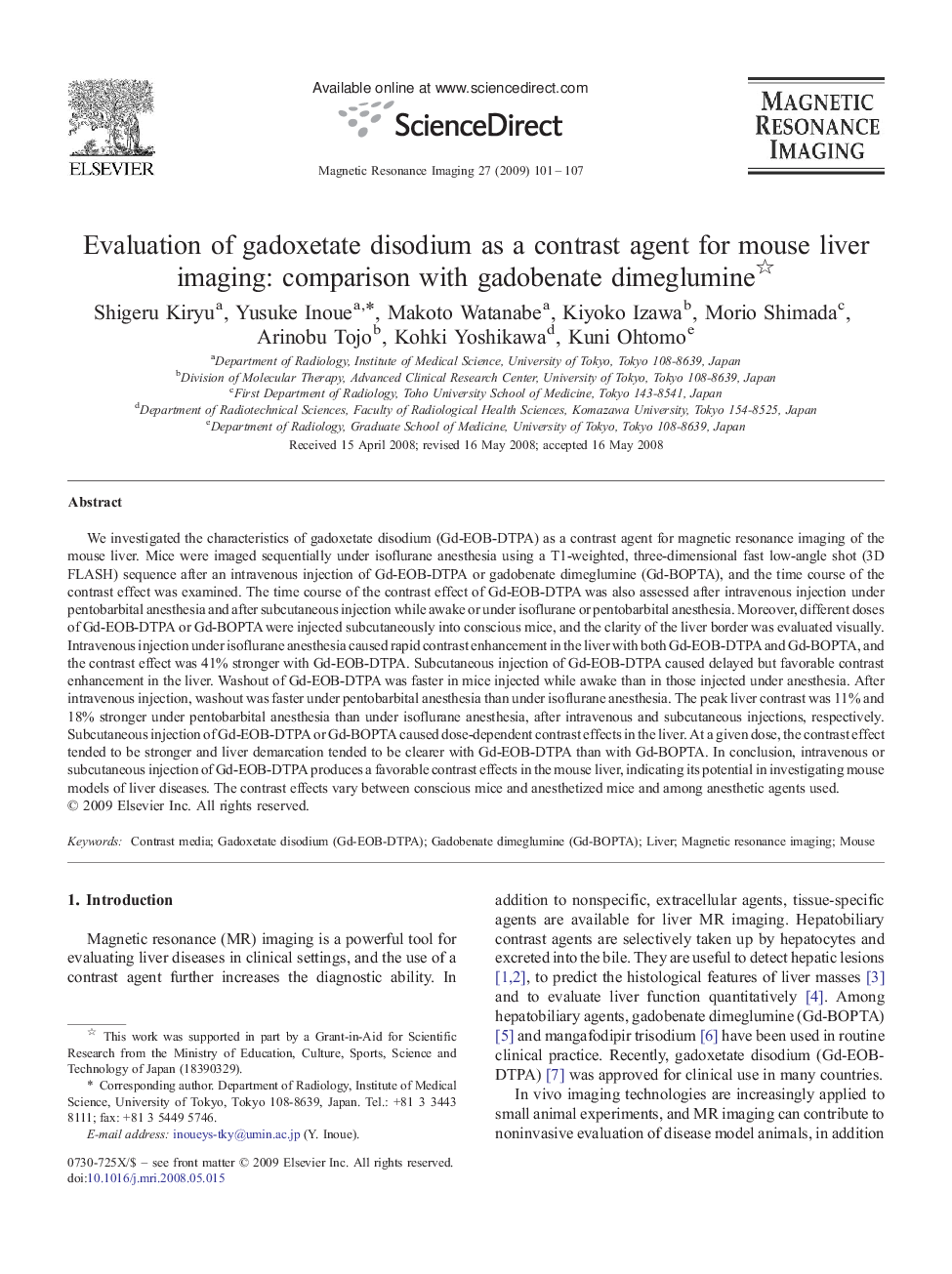| Article ID | Journal | Published Year | Pages | File Type |
|---|---|---|---|---|
| 1807932 | Magnetic Resonance Imaging | 2009 | 7 Pages |
We investigated the characteristics of gadoxetate disodium (Gd-EOB-DTPA) as a contrast agent for magnetic resonance imaging of the mouse liver. Mice were imaged sequentially under isoflurane anesthesia using a T1-weighted, three-dimensional fast low-angle shot (3D FLASH) sequence after an intravenous injection of Gd-EOB-DTPA or gadobenate dimeglumine (Gd-BOPTA), and the time course of the contrast effect was examined. The time course of the contrast effect of Gd-EOB-DTPA was also assessed after intravenous injection under pentobarbital anesthesia and after subcutaneous injection while awake or under isoflurane or pentobarbital anesthesia. Moreover, different doses of Gd-EOB-DTPA or Gd-BOPTA were injected subcutaneously into conscious mice, and the clarity of the liver border was evaluated visually. Intravenous injection under isoflurane anesthesia caused rapid contrast enhancement in the liver with both Gd-EOB-DTPA and Gd-BOPTA, and the contrast effect was 41% stronger with Gd-EOB-DTPA. Subcutaneous injection of Gd-EOB-DTPA caused delayed but favorable contrast enhancement in the liver. Washout of Gd-EOB-DTPA was faster in mice injected while awake than in those injected under anesthesia. After intravenous injection, washout was faster under pentobarbital anesthesia than under isoflurane anesthesia. The peak liver contrast was 11% and 18% stronger under pentobarbital anesthesia than under isoflurane anesthesia, after intravenous and subcutaneous injections, respectively. Subcutaneous injection of Gd-EOB-DTPA or Gd-BOPTA caused dose-dependent contrast effects in the liver. At a given dose, the contrast effect tended to be stronger and liver demarcation tended to be clearer with Gd-EOB-DTPA than with Gd-BOPTA. In conclusion, intravenous or subcutaneous injection of Gd-EOB-DTPA produces a favorable contrast effects in the mouse liver, indicating its potential in investigating mouse models of liver diseases. The contrast effects vary between conscious mice and anesthetized mice and among anesthetic agents used.
